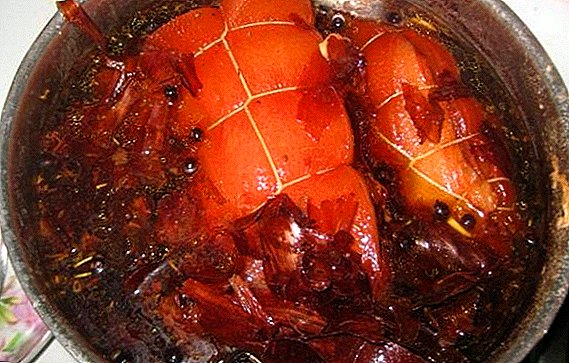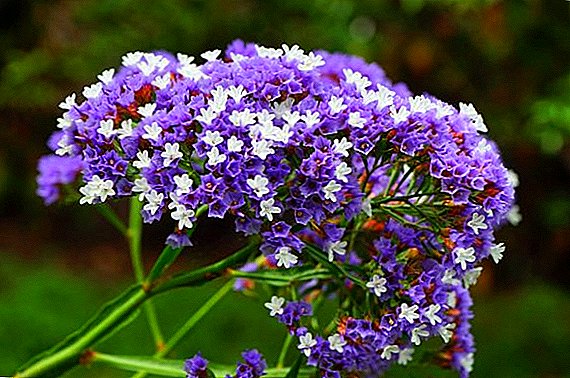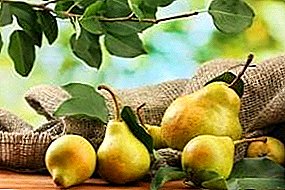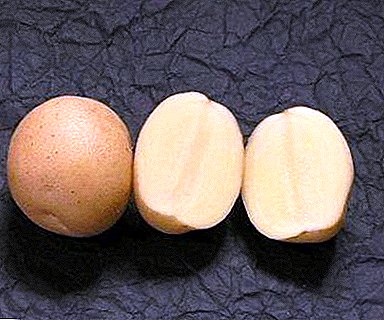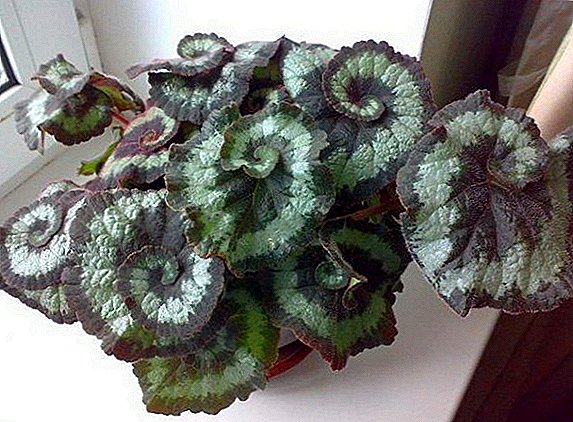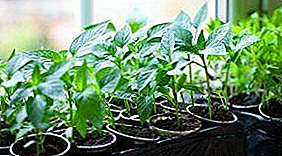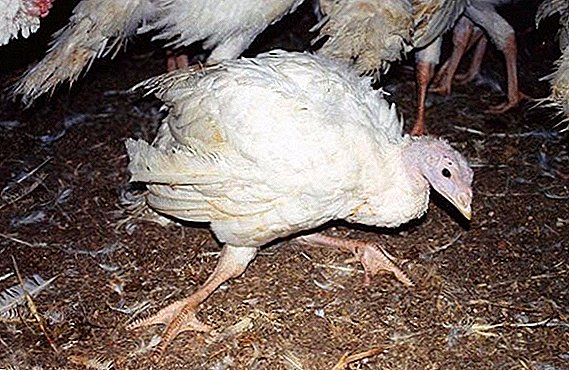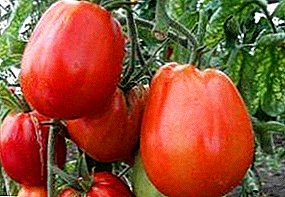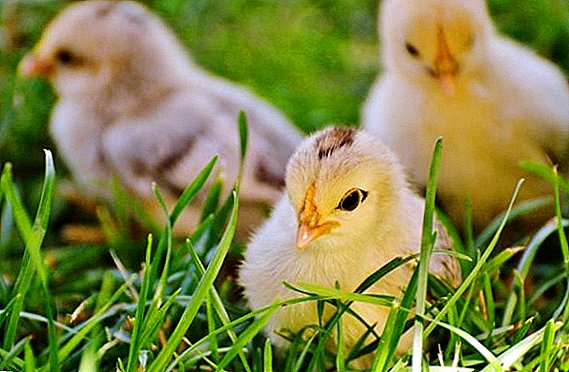 Fresh greens are very useful for young birds, who just need a lot of strength and vitamins for full development. But not everyone knows that not all weed can be safe for pets. There are a number of plants that can harm pets. Let's find out which greens are beneficial and which is harmful, and when to enter it into the diet of chickens.
Fresh greens are very useful for young birds, who just need a lot of strength and vitamins for full development. But not everyone knows that not all weed can be safe for pets. There are a number of plants that can harm pets. Let's find out which greens are beneficial and which is harmful, and when to enter it into the diet of chickens.
Types of greens in the diet of chickens
All greens that can be used as feed for chickens are conventionally divided into useful, positively influencing the growth and development of the young organism, and harmful (poisonous to the birds).
Did you know? Not a single chicken hatches from an egg with two yolks - there will not be enough free space for them to fully develop.
Useful food
In addition to wild herbs and garden weeds, this group includes:
- Nettle - a source of vitamins C and K, which are necessary for strengthening the walls of blood vessels. In addition, it contains manganese, iron, zinc, potassium, copper, magnesium, etc. Its consumption has a beneficial effect on the strength of the immune system and overall health.
- Dandelions and clover due to the high levels of vitamins, carotenoids, which turn into vitamin A. For feeding it is better to use fresh leaves.
- Knotweed Birds love him very much because of the ease of consumption (he has small foliage). This is a very common plant.
- Germinated grain of oats or wheat. It contains vitamin E in large quantities and attracts birds with its juiciness and tenderness.
- Aquatic plants - duckweed. It is rich in minerals and vitamins, able to accelerate the process of growth and gaining muscle mass. It can be given not only in fresh, but also in dried form.
- Needles. It contains vitamin C and A in large quantities.
- Vegetable tops: carrot, sorrel, green onions, cabbage. You can also use salad, but only in chopped form.





 Coniferous flour
Coniferous flour Beet tops should be given with extreme caution so as not to provoke a violation of the chair in chickens.
Beet tops should be given with extreme caution so as not to provoke a violation of the chair in chickens.In the mash is also recommended to add a variety of herbs: woodlice, alfalfa, wheatgrass and others.
It is interesting to read about the beneficial properties and the use of nettle, dandelions, clover, knotweed, green onions, woodlice, alfalfa, wheat grass.
Junk food
Adversely affecting younger and more mature chicken bodies. use of the following herbs:
- potato and tomato tops;
- belladonna;
- broom;
- hemlock;
- elder;
- dill;
- sagebrush;
- caustic buttercup;
- juniper;
- yellowcone;
- horse chestnut;
- white acacia;
- pear tree foliage.













Black nightshade, cycuta, cockle, henbane and hellebore are poisonous to chickens.
Read also about the healing and dangerous properties of plants: hemlock, elderberry, dill, wormwood, ranunculus, yellow cherry, chestnut, acacia, black hairy, hellebore.
Useful properties of herbs
Regarding the benefits of greenery for chickens the views of poultry farmers are very different. Some people think that it is worth giving it practically with the coming into the world, others - that it is an optional component of the diet.
For chickens
Actually herbs - main source of vitamins and minerals beneficial to the body. Some herbs contribute to the improvement of the cardiovascular system, others - a set of muscle mass, and others - the proper formation and strengthening of the skeleton, as well as the development of immunity.
They stimulate the growth and development of birds. 
For laying hens
The presence of freshly milled grasses in the diet of layers promotes:
- reduce the risk of beriberi;
- increased bird productivity;
- increase the level of taste and appearance of eggs;
- improve chicken digestive system;
- general strengthening of the body;
- improved vision;
- cure for rickets, worms, etc.
In addition, it is an excellent prevention of a number of common diseases. 
From what age can
It is recommended to start feeding greens when the chicken reaches about 4 days of age. It is given as an addition to the main feed. The first in the diet should appear nettle, and then other herbs as they grow into a baby.
Important! If the birds walk freely around the pen, they are able to determine useful and harmful weed for their own body.
Rules for introducing greens into the diet of chickens
In order not to provoke stress in a chicken due to the sudden appearance of such a novelty in the diet, greens should be introduced with a gradual increase in the portion. 
When to start
Up to 1.5 months of age it is worth giving greens strictly according to established standards:
- from 3 to 5 days after birth, give no more than 1 g per day for one chicken;
- up to 10 days old - 3 g;
- up to 20 days old - 7 g;
- up to 30 - 10 g;
- up to 40 - 15 g;
- up to 50 - 17 years old
 But immediately pure green is not recommended.
But immediately pure green is not recommended.
How to enter
At first, the chicken is given a special starter feed. From 3 days (minimum age) they begin to mix grass in it in crushed form. It is recommended not only to wash it, but also to scald it with boiling water in order to protect the fragile organism from possible diseases. After the first week of life, babies can be given chopped greens mixed with finely grated boiled mature potatoes.
If the chair has changed a little, but you did everything right, you should not worry - soon everything should return to normal, this is a normal reaction to a change in diet. When the stool is normalized completely, the chicken will be able to eat herbs in its pure form, previously chopped.
Learn how to feed chickens from the first days of life and how to feed nettle chickens to broiler chickens.
You can not allow the vegetation of greenery in the trough for more than 40 minutes or give it in a dirty form. This can trigger the development of pathogens and the subsequent disease of future chickens.
But if the condition of the bird gradually deteriorates, the stool does not return to normal, immediately stop giving greens. As they grow older, they themselves will begin to peck at it when the body needs it. 
Side effects and effects
Negative effects of consuming greens are not only a violation of the chair.
Among them also can be identified:
- severe poisoning, nausea from the consumption of poisonous herbs;
- weakening of immunity from overeating;
- the emergence of various kinds of diseases in immature chickens;
- death of adults and their offspring.
Did you know? Chickens love to "bathe" in the mud. They do it for the benefit of the body to fight off parasites that can live in their plumage.
Video: greens in the diet of chickens
Greens, no doubt, will be a useful addition to the diet of chickens and adult chickens. It nourishes the body with vitamins, strengthens the immune system and helps to fully develop offspring. But it is worth being very careful. Introduce such complementary foods gradually and carefully monitor the reaction of the chickens. Be careful and follow the rules to avoid any problems with the offspring.



